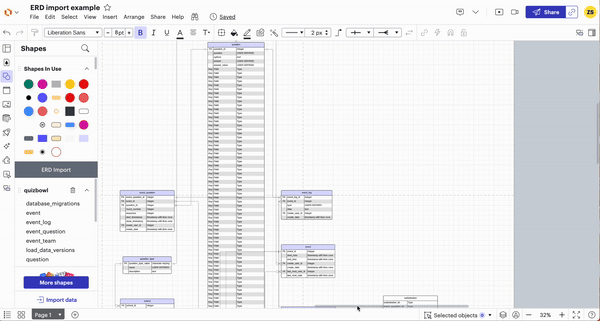How do I hide Entity Attributes in an ERD.
I have tables with 70+columns. Including column detail makes the ERD unusable.
 +2
+2How do I hide Entity Attributes in an ERD.
I have tables with 70+columns. Including column detail makes the ERD unusable.
Best answer by Zuzia S
Hi
Automatically reducing the number of visible attributes upon importing the database into the Lucidchart document is unfortunately not a feature we support at the moment.
We’re very interested in your feedback and committed to continually improving our products. Please first search the Product Feedback section of this community (with the filter Topic Type = Idea) to see if it’s already been submitted. If so, please add any additional details you’d like and upvote the request - this consolidation helps to refine feedback and properly capture the popularity of the request. If no one has submitted this idea yet, please create one of your own and be sure to include details about your use case or what you’d like to see in this experience. This will also allow other users with similar requests to discover and upvote it, then add details of their own.
A workaround for your issue could be to manually change the number of rows in the Advanced Options drop-down, using arrows or typing the desired number directly as such:

Let us know!
A Lucid account is required to interact with the Community, and your participation is subject to the Supplemental Lucid Community Terms. You may not participate in the Community if you are under age 18. You will be redirected to the Lucid app to log in.
A Lucid account is required to interact with the Community, and your participation is subject to the Supplemental Lucid Community Terms. You may not participate in the Community if you are under age 18. You will be redirected to the Lucid app to log in.
Enter your E-mail address. We'll send you an e-mail with instructions to reset your password.